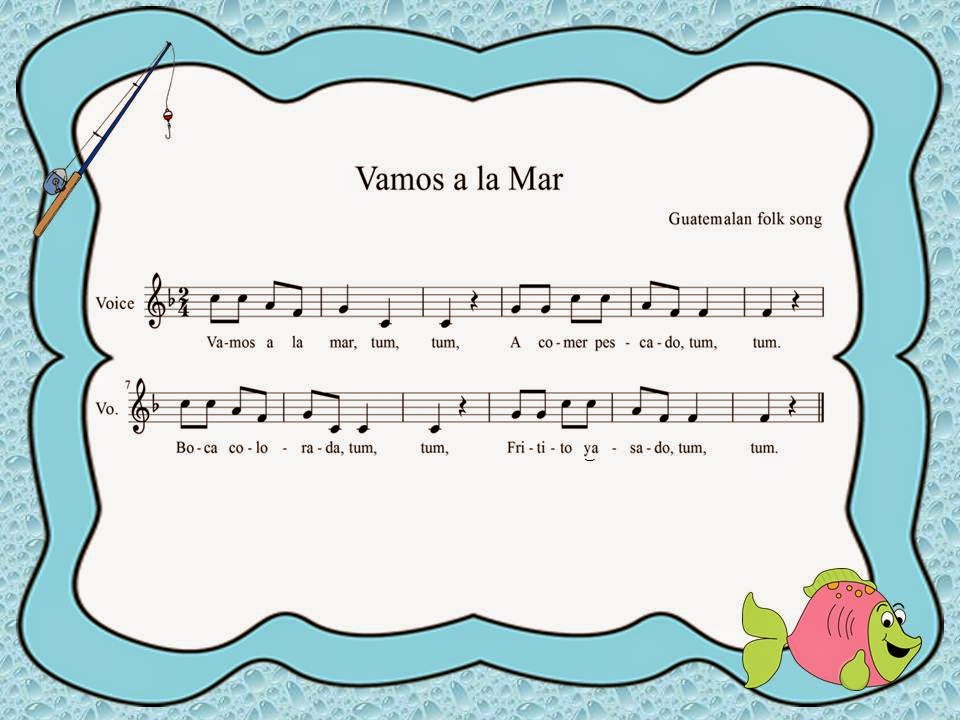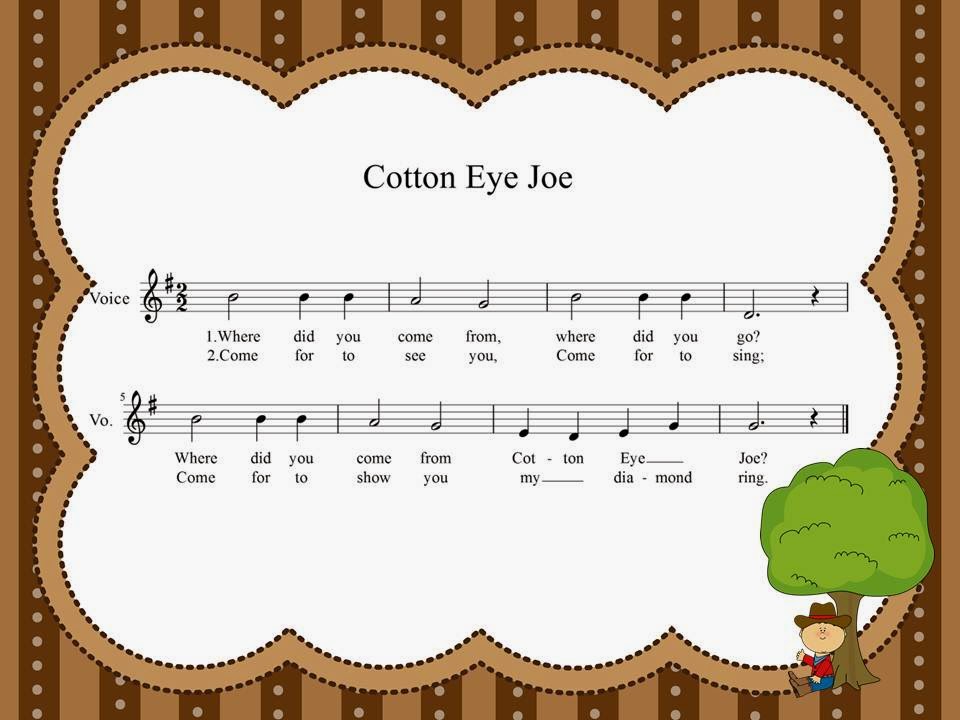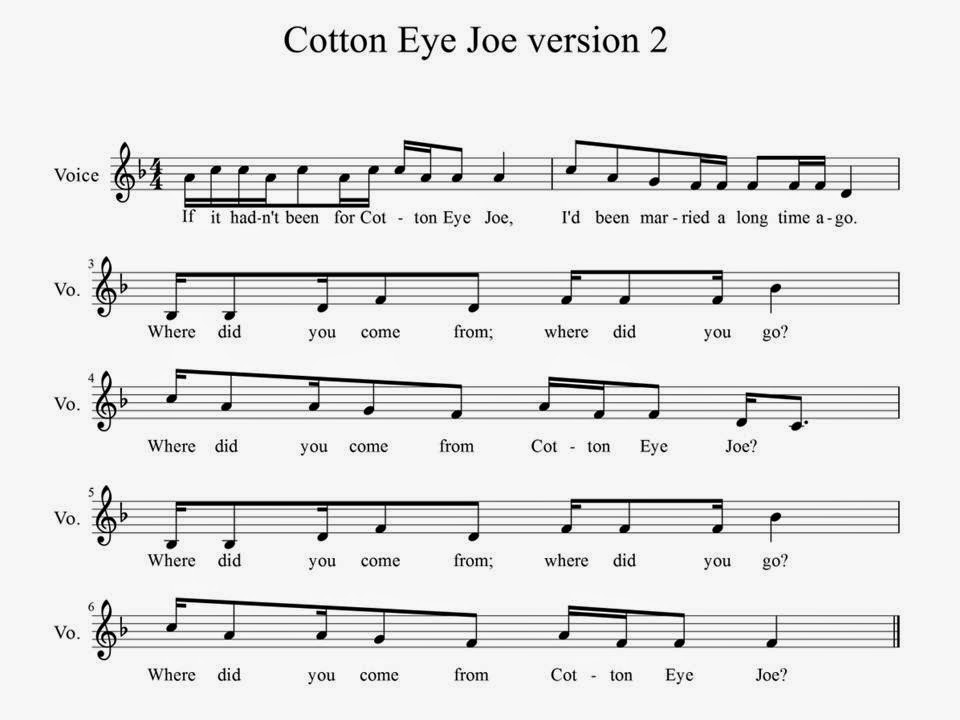If anybody knows me, I love all things Latin American - except beans. For some reason, I just hate those!
Anyway, this is a great song for teaching ta rest for your 1st graders, or bringing it back later on to practice low so. I wouldn't really use it to present that, because the interval is always re-so, but it would help enforce I-V accompaniment, and is really good for practicing that interval.
Latin American folk songs often have an uneven feel to them, because a lot of the time, their phrases are a little uneven - just different from what we're used to here in the good old U.S.A. This song has that uneven phrase thing - sort of. It has 4 equal-in-length phrases, but each phrase is 6 beats long. That's a little unusual - but cool. Something that you can point out to your kiddos! The form is ABA'B - so it's great for pointing that out as well.
The words are:
1. Vamos a la mar, tum, tum,
A comer pescado, tum, tum.
Boca colorada, tum, tum,
Fritito ya asado, tum, tum.
2. Vamos a la mar, tum, tum,
A comer pescado, tum, tum.
Fritito y asado, tum, tum,
En sarten de palo, tum, tum.
The meaning is (not an exact translation, but this way it can also be sung in English)
1. Let's go to the sea
To get fish to eat.
Mouth as red as ruby,
Grilled and fried and crispy.
2. Let's go to the sea
To get fish to eat.
Grilled and fried and crispy
In a wooden skillet.
There is not a game that I can find, but you could have the kids create their own (mine love doing this).
I found a cute little video of some kids adding body percussion to this song. They do it a little differently - they add an extra measure of rests to make the phrases even. Find that video here.
Also, since this song is so great for practicing/presenting ta rest, I came up with a little game I call "Fishing for Rhythms." Basically, you print off a set of these cards:
Cut them out, laminate them, etc. Then, you can spread them around the "pond," face down. A student has to "fish" for a rhythm and either you can do individual assessment - that student performs it by themselves, or you can have their team perform it. Either way, if it is performed correctly, they get a point. If it is incorrect, have them throw it back in the "pond," and continue playing.
You can also use these cards for games like "Post Office" or the fly swatter game - you know how much I love that one :) I've provided a set of these cards (12 in total, practicing ta, ti-ti and ta rest) in both color and black and white. You can get my whole file on this song (and support my adoption savings) here.
OR, you can wait until next week, when I'm throwing a big Cinco de Mayo sale and get this for 20% off, as well as all of my other Spanish language files :)
OR, you can wait until next week, when I'm throwing a big Cinco de Mayo sale and get this for 20% off, as well as all of my other Spanish language files :)











